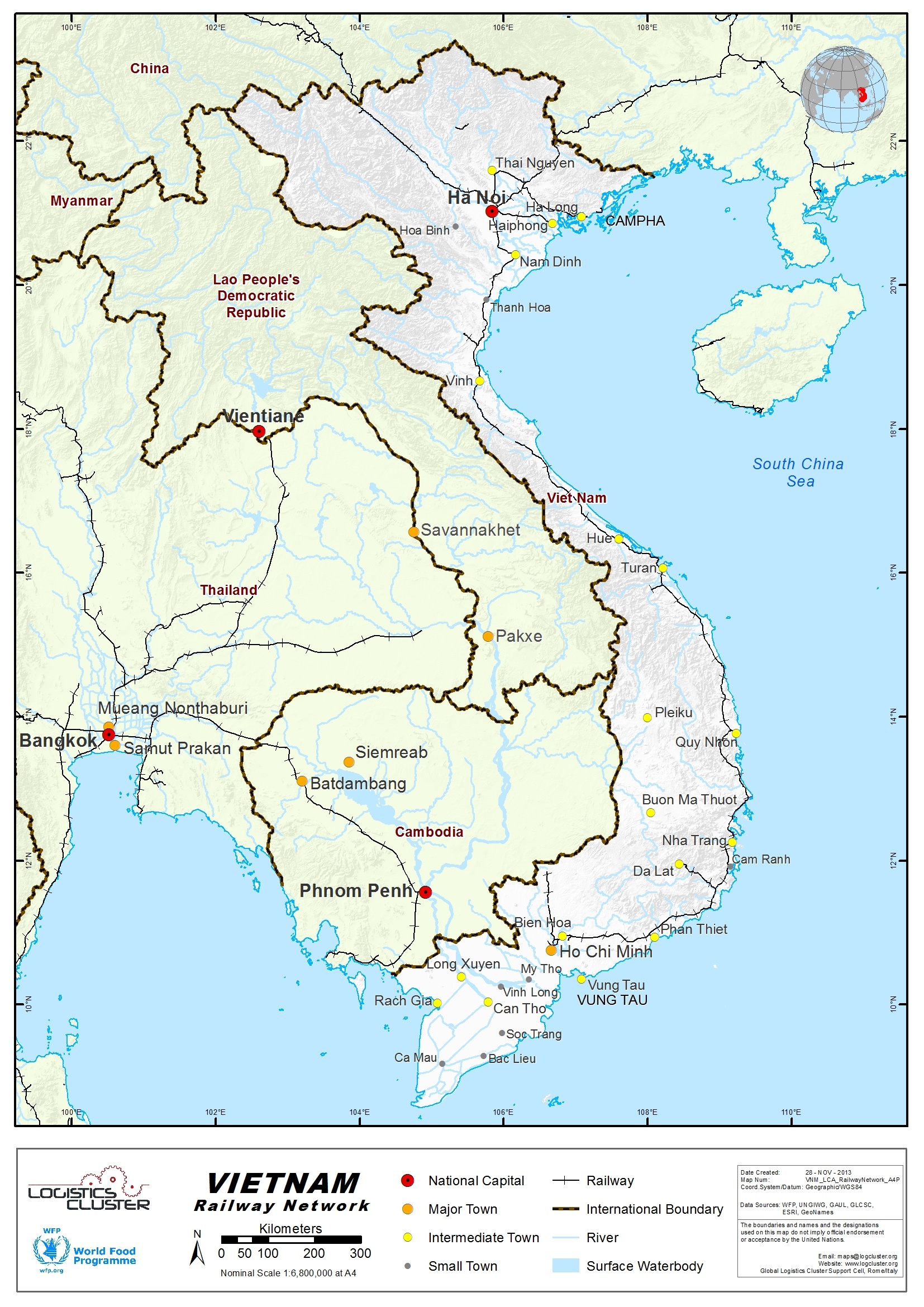Viet Nam Railway Assessment

The network consists of 7 lines with a total length of 2,600 km.
All lines are single track, mostly meter gauge, with a few standard gauge and double gauge towards the Chinese border.
There are over 1,800 bridges (57,044 m) and 39 tunnels (11,513 m) and 281 stations.
The network connects residential area to cultural, agricultural and industrial center, except the Mekong river delta area.
The railways is linked to China railways according to 2
directions:
o From Lao Cai province to Van Nam province
o From Lang Son province to Quang Tay province
When the network is more developed, the railway could possibly be linked to the Cambodia, Thailand and Malaysia railways network via the Singapore and Laos railways
The Viet Nam railway uses 3 kinds of gauge, namely 1,000 mm gauge, 1,435 mm-gauge (standard gauge) as well as 1,435 mm and 1,000 mm-gauge (mixed gauge). The length of the railway network and gauge are represented in the table next page:
The railways uses twin-block concrete sleeper, wooden sleeper and iron sleeper. 43 kg/m rail type and hard rail fasteners are used in most of the rail network. Some kinds of elastic fasteners are currently used in some divisions.
For additional information on Bridges, Tunnels and Signaling and Telecommunication Systems, please select the following document:
Vietnam Railway Assessment Additional Information
4.1 Viet Nam Government Contact List
Travel Time Matrix
Railway Network Data
| Line | Track Gauge | Track Distance (km) |
|---|---|---|
| Ha Noi – Ho Chi Minh | 1,000 mm | 1,726 |
| Ha Noi – Hai Phong | 1,000 mm | 102 |
| Ha Noi – Lao Cai | 1,000 mm | 296 |
| Ha Noi – Dong Dang | dual gauge (1,435 &1,000 mm) | 163 |
| Ha Noi – Quan Trieu | dual gauge (1,435 &1,000 mm) | 75 |
| Kep – Uong Bi – Ha Long | 1,435 mm | 106 |
| Kep – Luu Xa | 1,435 mm | 57 |
| Total | 3,106 km |
Railway Companies and Consortia
The Viet Nam Railway Cooperation (VRC) is the sole supplier of rail services in Viet Nam.
Following corporatization, VRC’s internal business has been restructured into four main business groups:
- 2 passenger train operating entities (North and South)
- A freight train operating company
- A grouping of regional infrastructure administrations
The train operating entities are quasi-independent management and accounting entities.
The Viet Nam Railway Administration remains responsible for planning development of the sector, for new construction and for securing resources for maintenance.
The VRC pays 10% of its gross revenues as a track access charge.
These funds are generally used toward infrastructure maintenance.
The network is small, old and has received little investment for upgrading, the VRC has performed well.
Viet Nam does not have concentrated flows of bulk raw materials or long-distances which give rise to heavy rail freight flows, its 8 lines serve high density passenger corridors.
Traffic density is about 2.3 million traffic units per route km per annum, which is relatively low compared to other countries in the region.
The average passenger train load in Viet Nam is around 370 passengers which is relatively high, but average freight load of 225 tons is low, as a result of low axle-weight infrastructure, short crossing loops and possible sub-optimal freight operating plans.


